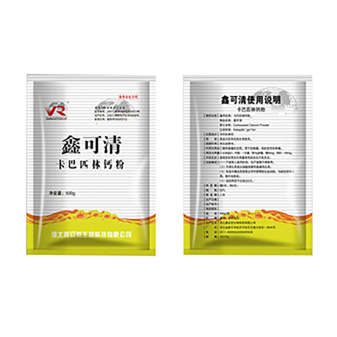- Afrikaans
- Albanian
- Amharic
- Arabic
- Armenian
- Azerbaijani
- Basque
- Belarusian
- Bengali
- Bosnian
- Bulgarian
- Catalan
- Cebuano
- Corsican
- Croatian
- Czech
- Danish
- Dutch
- English
- Esperanto
- Estonian
- Finnish
- French
- Frisian
- Galician
- Georgian
- German
- Greek
- Gujarati
- Haitian Creole
- hausa
- hawaiian
- Hebrew
- Hindi
- Miao
- Hungarian
- Icelandic
- igbo
- Indonesian
- irish
- Italian
- Japanese
- Javanese
- Kannada
- kazakh
- Khmer
- Rwandese
- Korean
- Kurdish
- Kyrgyz
- Lao
- Latin
- Latvian
- Lithuanian
- Luxembourgish
- Macedonian
- Malgashi
- Malay
- Malayalam
- Maltese
- Maori
- Marathi
- Mongolian
- Myanmar
- Nepali
- Norwegian
- Norwegian
- Occitan
- Pashto
- Persian
- Polish
- Portuguese
- Punjabi
- Romanian
- Russian
- Samoan
- Scottish Gaelic
- Serbian
- Sesotho
- Shona
- Sindhi
- Sinhala
- Slovak
- Slovenian
- Somali
- Spanish
- Sundanese
- Swahili
- Swedish
- Tagalog
- Tajik
- Tamil
- Tatar
- Telugu
- Thai
- Turkish
- Turkmen
- Ukrainian
- Urdu
- Uighur
- Uzbek
- Vietnamese
- Welsh
- Bantu
- Yiddish
- Yoruba
- Zulu
Dec . 07, 2024 07:23 Back to list
vet clinic disinfectants
The Importance of Disinfectants in Veterinary Clinics
In the world of veterinary medicine, maintaining a clean and sterile environment is paramount. Disinfectants play a crucial role in ensuring that veterinary clinics remain free from harmful pathogens that can affect both animal health and public safety. This article will discuss the importance of disinfectants, the different types available, and best practices for their use in veterinary clinics.
Why Disinfection is Critical
Veterinary clinics are often a melting pot of various animals, each carrying their own unique microorganisms. These pathogens, including viruses, bacteria, and fungi, can spread rapidly in a clinical setting. Common ailments such as kennel cough, parvovirus, and fungal infections can easily be transmitted if surfaces, instruments, and even the air are not properly disinfected.
Disinfectants are essential in breaking the chain of infection. By regularly disinfecting surfaces and equipment, clinics can significantly reduce the risk of outbreaks, ensuring the health and safety of both patients and staff. Furthermore, maintaining a clean environment fosters trust and confidence among pet owners, assuring them that their animals are receiving the best care possible.
Types of Disinfectants
There are numerous disinfectants available, and choosing the right one is crucial for effective sanitation. Here are some common categories
1. Quaternary Ammonium Compounds (Quats) These are popular in veterinary settings due to their efficacy against a broad range of microorganisms. Quats are often used for cleaning surfaces, cages, and equipment. They are non-toxic to animals and have residual antimicrobial effects.
2. Bleach Solutions Sodium hypochlorite (commonly known as bleach) is a powerful disinfectant effective against bacteria, viruses, and fungi. However, it can be harsh on surfaces and may require thorough rinsing. It's essential to use a diluted solution, as concentrated bleach can be harmful to both animals and humans.
3. Phenolic Compounds These disinfectants are effective against a range of bacteria and viruses but can be toxic to cats. Therefore, veterinary clinics must take extra precautions when using phenolics, ensuring that all surfaces are rinsed well and pets are kept away during application.
4. Hydrogen Peroxide This is a versatile disinfectant that can be used for surfaces and tools. It breaks down into water and oxygen, making it a more environmentally friendly option. However, it can have limited effectiveness against certain types of viruses, so understanding its strengths and limitations is essential.
vet clinic disinfectants

5. Iodine-based Disinfectants Often used in surgical settings, iodine compounds are effective at eliminating pathogens. However, with the advent of newer disinfectants, their use has seen a decline due to skin staining and potential toxicity.
Best Practices for Disinfection
To maximize the effectiveness of disinfectants in veterinary clinics, following best practices is essential
1. Preparation Before applying disinfectants, the area should be thoroughly cleaned to remove dirt and organic matter. Disinfectants work best on clean surfaces, as dirt can hinder their effectiveness.
2. Contact Time Each disinfectant has a recommended contact time, which is the duration for which the surface should remain wet to ensure the agent works effectively. Following these guidelines is crucial to achieve the desired antimicrobial effect.
3. Dilution Always follow the manufacturer's instructions regarding dilution rates. Using a disinfectant in improper concentrations can reduce its effectiveness and may even cause harm.
4. Ventilation Ensure that the area is well-ventilated during and after disinfection to minimize exposure to any harmful fumes.
5. Training Staff should be trained on proper disinfection techniques and the importance of using disinfectants appropriately. Consistent education can help maintain high standards of cleanliness.
Conclusion
Disinfectants are an integral part of maintaining a healthy environment in veterinary clinics. By understanding the various types of disinfectants available and adhering to best practices, veterinary professionals can significantly reduce the risk of infections and ensure the well-being of the animals in their care. A proactive approach to disinfection not only protects animals but also enhances the reputation of the clinic, promoting trust and loyalty among clients. In this ever-evolving field, commitment to cleanliness remains a cornerstone of exceptional veterinary practice.
-
Guide to Oxytetracycline Injection
NewsMar.27,2025
-
Guide to Colistin Sulphate
NewsMar.27,2025
-
Gentamicin Sulfate: Uses, Price, And Key Information
NewsMar.27,2025
-
Enrofloxacin Injection: Uses, Price, And Supplier Information
NewsMar.27,2025
-
Dexamethasone Sodium Phosphate Injection: Uses, Price, And Key Information
NewsMar.27,2025
-
Albendazole Tablet: Uses, Dosage, Cost, And Key Information
NewsMar.27,2025













